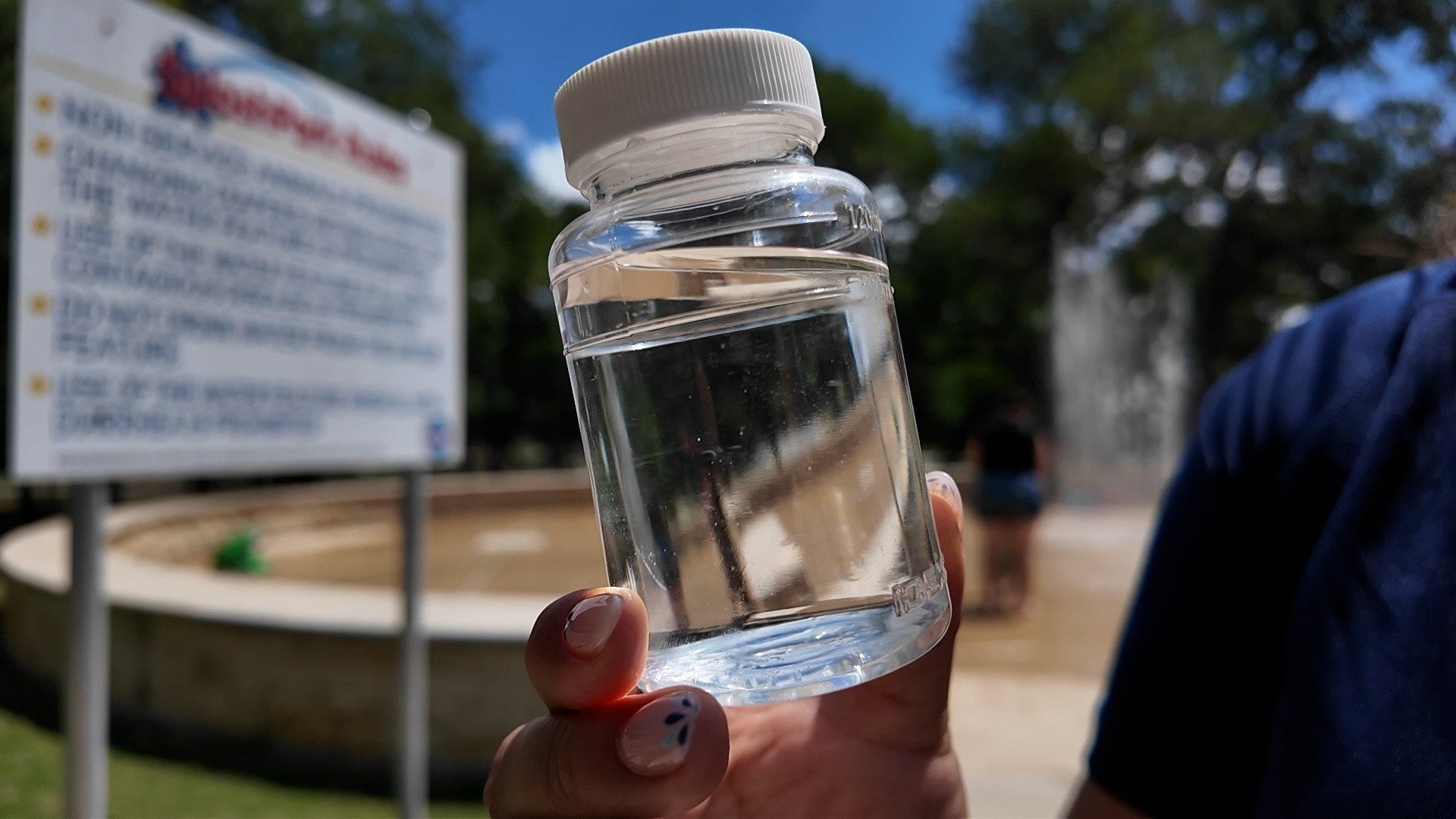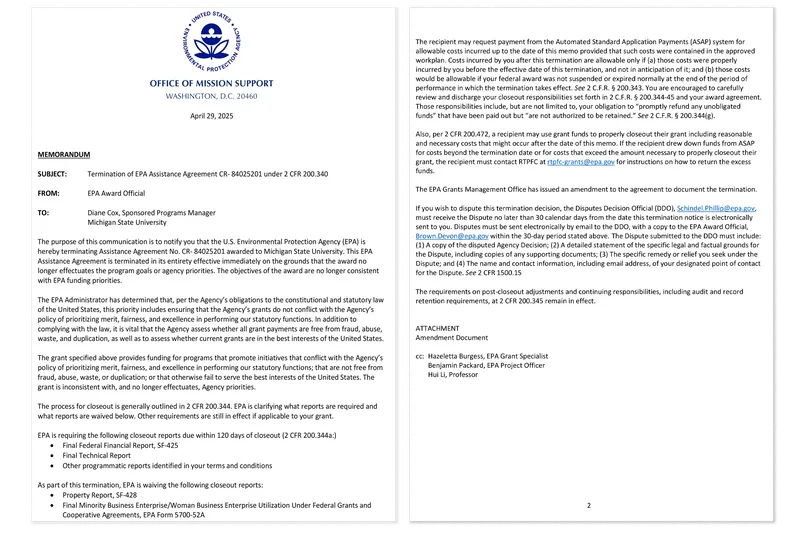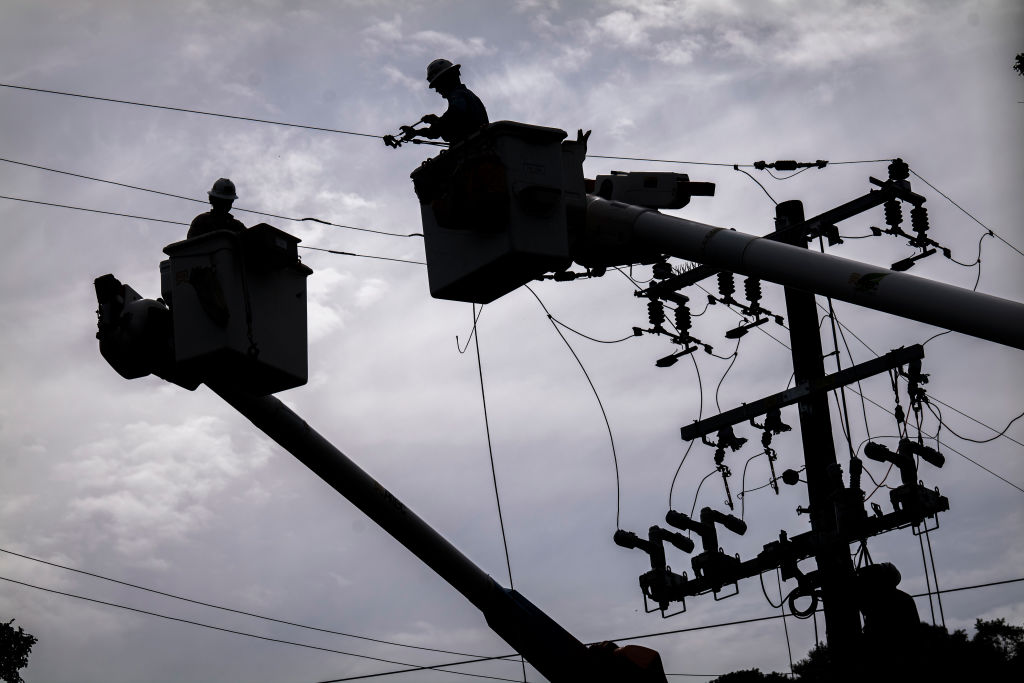ProPublica is a nonprofit newsroom that investigates abuses of power. Sign up to receive our biggest stories as soon as they’re published.

What to know before you go to Saturday’s Shakira Concert
July 2, 2025
What’s in the water at San Antonio’s splash pads?
July 2, 2025One summer day in 2017, a front-page story in the StarNews of Wilmington, North Carolina, shook up the lives of hundreds of thousands of people. The drinking water system, it said, was polluted with a contaminant commonly known as GenX, part of the family of “forever” PFAS chemicals.
It came from a Chemours plant in Fayetteville, near the winding Cape Fear River. Few knew about the contaminated water until the article described the discoveries of scientists from the Environmental Protection Agency and a state university. Given that certain types of PFAS have been linked to cancer, there was widespread anxiety over its potential danger.
In the onslaught of legal action and activism that followed, the EPA during President Donald Trump’s first term took an assertive stance, vowing to combat the spread of PFAS nationwide.
In its big-picture PFAS action plan from 2019, the agency said it would attack this complex problem on multiple fronts. It would, for example, consider limiting the presence of two of the best-known compounds — PFOA and PFOS — in drinking water. And, it said, it would find out more about the potential harm of GenX, which was virtually unregulated.
By the time Trump was sworn in for his second term, many of the plan’s suggestions had been put in place. After his first administration said PFOA and PFOS in drinking water should be regulated, standards were finalized under President Joe Biden. Four other types of PFAS, including GenX, were also tagged with limits.
But now, the second Trump administration is pulling back. The EPA said in May that it will delay enforcement on the drinking water limits for PFOA and PFOS until 2031, and it will rescind and reconsider the limits on the other four. Among those who challenged the standards in court is Chemours, which has argued that the EPA, under Biden, “used flawed science and didn’t follow proper rulemaking procedures” for GenX.
These EPA decisions under Trump are part of a slew of delays and course changes to PFAS policies that had been supported in his first term. Even though his earlier EPA pursued a measure that would help hold polluters accountable for cleaning up PFAS, the EPA of his second term has not yet committed to it. The agency also slowed down a process for finding out how industries have used the chemicals, a step prompted by a law signed by Trump in 2019.
At the same time, the EPA is hampering its ability to research pollutants — the kind of research that made it possible for its own scientists to investigate GenX. As the Trump administration seeks severe reductions in the EPA’s budget, the agency has terminated grants for PFAS studies and paralyzed its scientists with spending restrictions.
Pointing to earlier announcements on its approach to the chemicals, the EPA told ProPublica that it’s “committed to addressing PFAS in drinking water and ensuring that regulations issued under the Safe Drinking Water Act follow the law, follow the science, and can be implemented by water systems to strengthen public health protections.”
“If anything,” the agency added, “the Trump administration’s historic PFAS plan in 2019 laid the groundwork for the first steps to comprehensively address this contamination across media and we will continue to do so this term.”
In public appearances, EPA Administrator Lee Zeldin has pushed back on the suggestion that his agency weakened the drinking water limits on GenX and similar compounds. Future regulations imposed by his agency, he said, could be more or less stringent.
“What we want to do is follow the science, period,” he has said.
That sentiment perplexes scientists and environmental advocates, who say there is already persuasive evidence on the dangers of these chemicals that linger in the environment. The EPA reviewed GenX, for example, during both the first Trump and Biden administrations. In both 2018 and 2021, the agency pointed to animal studies linking it to cancer, as well as problems with kidneys, immune systems and, especially, livers. (Chemours has argued that certain animal studies have limited relevance to humans.)
Scientists and advocates also said it’s unclear what it means for the EPA to follow the science while diminishing its own ability to conduct research.
“I don’t understand why we would want to hamstring the agency that is designed to make sure we have clean air and clean water,” said Jamie DeWitt, a toxicologist in Oregon who worked with other scientists on Cape Fear River research. “I don’t understand it.”
Credit:
Ed Kashi/The New York Times/Redux Images
Delays, Confusion Over PFAS
Favored for their nonstick and liquid-resistant qualities, synthetic PFAS chemicals are widely used in products like raincoats, cookware and fast food wrappers. Manufacturers made the chemicals for decades without disclosing how certain types are toxic at extremely low levels, can accumulate in the body and will scarcely break down over time — hence the nickname “forever chemicals.”
The chemicals persist in soil and water too, making them complicated and costly to clean up, leading to a yearslong push to get such sites covered by the EPA’s Superfund program, which is designed to handle toxic swaths of land. During the first Trump administration, the EPA said it was taking steps toward designating the two legacy compounds, PFOA and PFOS, as “hazardous substances” under the Superfund program. Its liability provisions would help hold polluters responsible for the cost of cleaning up.
Moving forward with this designation process was a priority, according to the PFAS plan from Trump’s first term. Zeldin’s EPA describes that plan as “historic.” And, when he represented a Long Island district with PFAS problems in Congress, Zeldin voted for a bill that would have directed the EPA to take this step.
The designation became official under Biden. But business groups, including the U.S. Chamber of Commerce, and organizations representing the construction, recycling and chemical industries, sued. Project 2025, The Heritage Foundation’s playbook for the new administration, also questioned it.
Zeldin has said repeatedly that he wants to hold polluters accountable for PFAS, but his EPA requested three delays in the court case challenging the Superfund designation that helps make it possible.
The agency said in a recent motion it needed the latest pause because new leadership is still reviewing the issues and evaluating the designation in context of its “comprehensive strategy to address PFOA and PFOS.”
The EPA also delayed a rule requiring manufacturers and importers to report details about their PFAS use between 2011 and 2022. An annual bill that sets defense policy and spending, signed by Trump in his first term, had charged the EPA with developing such a process.
When Biden’s EPA finalized it, the agency said the rule would provide the largest-ever dataset of PFAS manufactured and used in the United States. It would help authorities understand their spread and determine what protections might be warranted.
Businesses were supposed to start reporting this month. But in a May 2 letter, a coalition of chemical companies petitioned the EPA to withdraw the deadline, reconsider the rule and issue a revised one with narrowed scope.
When the EPA delayed the rule less than two weeks later, it said it needed time to prepare for data collection and to consider changes to aspects of the rule.
In an email to ProPublica, the agency said it will address PFAS in many ways. Its approach, the agency said, is to give more time for compliance and to work with water systems to reduce PFAS exposure as quickly as feasible, “rather than issue violations and collect fees that don’t benefit public health.”
The court expects an update from the EPA in the Superfund designation case by Wednesday, and in the legal challenges to the drinking water standards by July 21. The EPA could continue defending the rules. It could ask the court for permission to reverse its position or to send the rules back to the agency for reconsideration. Or it could also ask for further pauses.
“It’s just a big unanswered question whether this administration and this EPA is going to be serious about enforcing anything,” said Robert Sussman, a former EPA official from the administrations of Presidents Bill Clinton and Barack Obama. As a lawyer, he now represents environmental groups that filed an amicus brief in PFAS cases.
Back in North Carolina, problems caused by the chemicals continue to play out.
A consent order between the state and Chemours required the manufacturer to drastically reduce the release of GenX and other PFAS into the environment. (The chemicals commonly called GenX refer to HFPO-DA and its ammonium salt, which are involved in the GenX processing aid technology owned by Chemours.)
Chemours told ProPublica that it invested more than $400 million to remediate and reduce PFAS emissions. It also noted that there are hundreds of PFAS users in North Carolina, “as evidenced by PFAS seen upstream and hundreds of miles away” from its Fayetteville plant “that cannot be traced back to the site.”
PFAS-riddled sea foam continues to wash up on the coastal beaches. Chemours and water utilities, meanwhile, are battling in court about who should cover the cost of upgrades to remove the chemicals from drinking water.
Community forums about PFAS draw triple-digit crowds, even when they’re held on a weeknight, said Emily Donovan, co-founder of the volunteer group Clean Cape Fear, which has intervened in federal litigation. In the fast-growing region, new residents are just learning about the chemicals, she said, and they’re angry.
“I feel like we’re walking backwards,” Donovan said. Pulling back from the drinking water standards, in particular, is “disrespectful to this community.”
“It’s one thing to say you’re going to focus on PFAS,” she added. “It’s another thing to never let it cross the finish line and become any meaningful regulation.”

Credit:
Obtained by ProPublica
Research Under Fire
The EPA of Trump’s first term didn’t just call for more regulation of PFAS, it also stressed the importance of better understanding the forever chemicals through research and testing.
In a 2020 update to its PFAS action plan, the EPA highlighted its support for North Carolina’s investigation of GenX in the Cape Fear River. And it described its efforts to develop the science on PFAS issues affecting rural economies with “first-of-its-kind funding for the agriculture sector.”
Zeldin, too, has boasted about advancing PFAS research in an April news release. “This is just a start of the work we will do on PFAS to ensure Americans have the cleanest air, land, and water,” he said.
At about the same time, though, the agency terminated a host of congressionally appropriated grants for PFAS research, including over $15 million for projects focused on food and farmlands in places like Utah, Texas and Illinois.
Scientists at Michigan State University, for example, were investigating how PFAS interacts with water, soil, crops, livestock and biosolids, which are used for fertilizer. They timed their latest study to this year’s growing season, hired staff and partnered with a farm. Then the EPA canceled two grants.
In virtually identical letters, the agency said that each grant “no longer effectuates the program goals or agency priorities. The objectives of the award are no longer consistent with EPA funding priorities.”
The contrast between the agency’s words and actions raises questions about the process behind its decisions, said Cheryl Murphy, head of Michigan State’s Center for PFAS Research and co-lead of one of the projects.
“If you halt it right now,” she said, “what we’re doing is we’re undermining our ability to translate the science that we’re developing into some policy and guidance to help people minimize their exposure to PFAS.”
At least some of the researchers are appealing the terminations.
About a month after PFAS grants to research teams in Maine and Virginia were terminated for not being aligned with agency priorities, the agency reinstated them. The EPA told ProPublica that “there will be more updates on research-related grants in the future.”
Even if the Michigan State grants are reinstated, there could be lasting consequences, said Hui Li, the soil scientist who led both projects. “We will miss the season for this year,” he said in an email, “and could lose the livestock on the farm for the research.”
Federal researchers are also in limbo. Uncertainty, lost capacity and spending restrictions have stunted the work at an EPA lab in Duluth, Minnesota, that investigates PFAS and other potential hazards, according to several sources connected to it. As one source who works at the lab put it, “We don’t know how much longer we will be operating as is.”
The EPA told ProPublica that it’s “continuing to invest in research and labs, including Duluth, to advance the mission of protecting human health and the environment.”
Meanwhile, the agency is asking Congress to eliminate more than half of its own budget. That includes massive staffing cuts, and it would slash nearly all the money for two major programs that help states fund water and wastewater infrastructure. One dates back to President Ronald Reagan’s administration. The other was spotlighted in a paper by Trump’s first-term EPA, which said communities could use these funds to protect public health from PFAS. It trumpeted examples from places like Michigan and New Jersey.
The EPA lost 727 employees in voluntary separations between Jan. 1 and late June, according to numbers the agency provided to ProPublica. It said it received more than 2,600 applications for the second round of deferred resignations and voluntary early retirements.
“These are really technical, difficult jobs,” said Melanie Benesh, vice president for government affairs at the nonprofit Environmental Working Group. “And the EPA, by encouraging so many employees to leave, is also losing a lot of institutional knowledge and a lot of technical expertise.”
The shake-up also worries DeWitt, who was one of the scientists who helped investigate the Cape Fear River contamination and who has served on an EPA science advisory board. Her voice shook as she reflected on the EPA’s workforce, “some of the finest scientists I know,” and what their loss means for public well-being.
“Taking away this talent from our federal sector,” she said, will have “profound effects on the agency’s ability to protect people in the United States from hazardous chemicals in air, in water, in soil and potentially in food.”
Great Job by Anna Clark & the Team @ ProPublica Source link for sharing this story.




